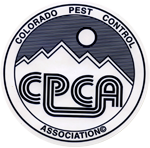Pest Library - Bed Bugs
Bed Bugs

Bedbugs (or bed bugs) are small, elusive, and parasitic insects of the family Cimicidae. They live strictly by feeding on the blood of humans and other warm-blooded animals. The name "bed bug" is derived from the insect's preferred habitat infesting houses and especially beds or other common areas where people may sleep. Bedbugs, though not strictly nocturnal, are mainly active at night and are capable of feeding unnoticed on their hosts.
Largely eradicated as pests in the United States in the early 1940s, bedbugs have been resurgent in the past decade to near epidemic proportions.
Disease transmission
Bedbugs seem to possess all of the necessary prerequisites for being capable of passing diseases from one host to another, but there have been no known cases of bed bugs passing disease from host to host. There are at least twenty-seven known pathogens (some estimates are as high as forty-one) that are capable of living inside a bed bug or on its mouthparts. Extensive testing in laboratory settings concludes that bed bugs are unlikely to pass disease from one person to another. Therefore bedbugs are less dangerous than some more common insects such as the flea.
Other effects on health
The salivary fluid injected by bed bugs typically causes the skin to become irritated and inflamed, although individuals can differ in their sensitivity. Anaphylactoid reactions produced by the injection of serum and other nonspecific proteins are observed and there is the possibility that the saliva of the bedbugs may cause anaphylactic shock in a small percentage of people. It is also possible that sustained feeding by bedbugs may lead to anemia. It is also important to watch for and treat any secondary bacterial infection. Systemic poisoning may occur if the bites are numerous.
Detection of Bed Bugs
Confirming the presence of bedbugs can be a tricky matter-particularly in cases where an infestation is light, recurrent, or when a user has no prior experience in dealing with bedbugs. Because of this, it is advisable that a person become aware of the telltale signs of a budding infestation and, if noted, seek to have it treated immediately (either through self-treatment, in taking measures to isolate the problem, or through the hiring of a professional) before the infestation has a chance to grow and spread into something that will be more difficult to contain later on. In light infestations, bedbugs will often lodge themselves unnoticed into the tiniest of crevices away from viewing and will usually come out to feed only deep in the middle of the night. But this rule is not set in stone as there will be exceptions-particularly in heavy infestations where it will then become common to see bedbugs crawling about in broad daylight.
Early infestations can be difficult to detect and the symptoms of bedbugs might often be detected before the bugs themselves. Typical symptoms of a bedbug infestation may include the discovery of fecal spots, crushed bedbugs and/or bloodstains on the sheets, the finding of cast skins that have been discarded, the development of itchy welts from their bites (in those that react), etc. Use of a crevice tool to reach into small spaces as well as the use of a magnifying glass and/or flashlight can assist in the successful detection of bedbugs and their symptoms. A crevice tool, however, can be improvised but-very importantly-should consist of a non-conductive material such as plastic or wood if it is to be used to probe walls, baseboards, and/or electronics, etc. (to prevent electric shock).
Control and elimination of Bed Bugs
Pesticides
With the widespread use of DDT in the 1940s and '50s, bedbugs mostly disappeared from North America in the mid-twentieth century. Infestations remained common in many other parts of the world and in recent years have also begun to rebound in North America. Thanks to rises in rampant hoarding around the United States, bedbugs are able to hide and reproduce without immediate detection. Reappearance of bedbugs has presented new challenges for pest control due to their developed resistance to various pesticides including DDT, and organophosphates. In fact, using DDT on today's bedbug makes it more active.
Another reason for their increase is that more pest control services use gel-based pesticide baits for control of cockroaches and ants, the most common pests in structures, instead of residual sprays. When residual sprays were used to kill the more common insect pests, they resulted in the collateral control of bedbug populations. The gel-based insecticides primarily used today to control cockroach and ant populations do not have any effect on bedbugs, as bed bugs are not attracted to baits.
Yet another perceived cause of the bedbug resurgence is the growing push to recycle mattresses. Not only are mattresses to be recycled collected and stored with those already processed, but it is very difficult to ensure that no bedbugs or eggs survive the processing. The National Pest Management Association, a US advocacy group for pest management professionals conducted a "proactive bedbug public relations campaign" in 2005 and 2006, resulting in increased media coverage of bedbug stories and an increase in business for pest controllers.


